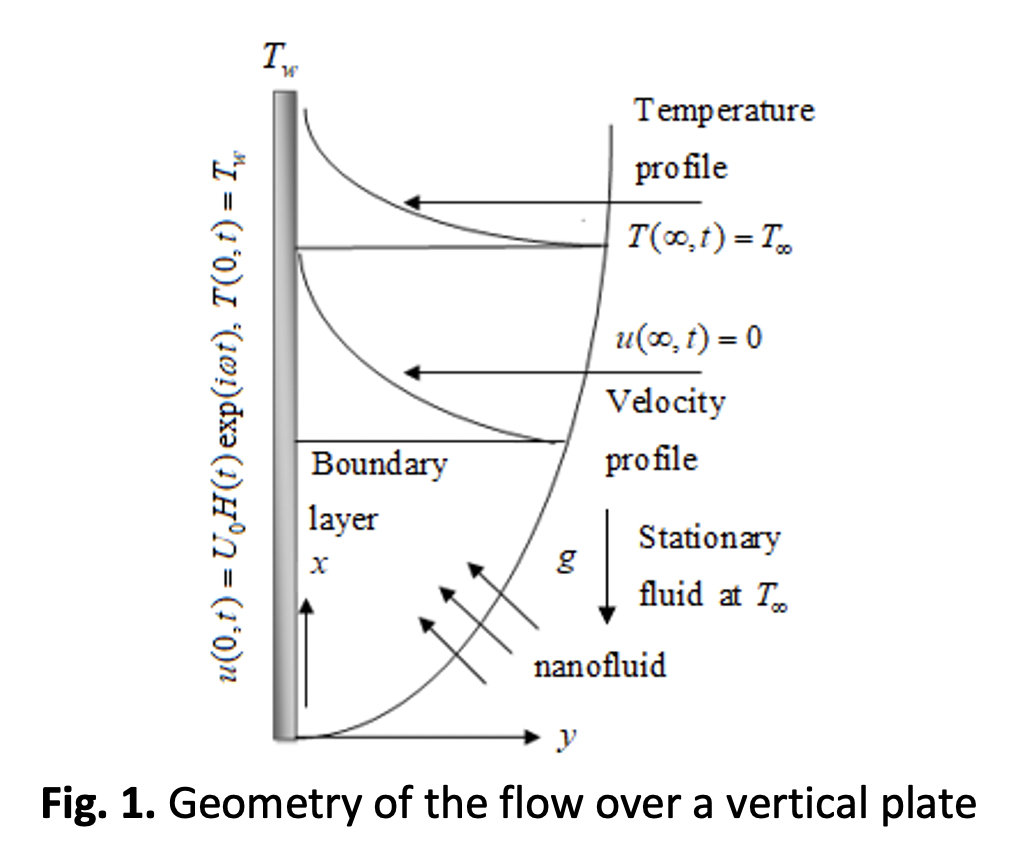Heat Generation Effects on Maxwell Nanofluid Passing Over an Oscillating Vertical Plate
DOI:
https://doi.org/10.37934/araset.28.2.348355Keywords:
Maxwell nanofluid, Laplace transform method, heat generation, copper nanoparticlesAbstract
This article investigates the flow of Maxwell nanofluid over an oscillating plate with copper nanoparticles and kerosene oil as a base fluid. Novel aspects of heat generation, free convection and thermophysical properties of nanofluids are given special attention in this research. Revised model for passive control of nanoparticle volume fraction at the plate is used in this study. The formulated differential system is solved analytically using Laplace transform technique. The solutions acquired for momentum, temperature and shear stress are greatly influenced with the variation of the volume fraction and Maxwell parameter. The computational software MathCAD-15 has been used for plotting the graphs.Downloads

Downloads
Published
2022-10-31
How to Cite
Sidra Aman, Dennis Ling Chuan Ching, Mohd. Zuki Salleh, & Zulkhibri Ismail. (2022). Heat Generation Effects on Maxwell Nanofluid Passing Over an Oscillating Vertical Plate . Journal of Advanced Research in Applied Sciences and Engineering Technology, 28(2), 348–355. https://doi.org/10.37934/araset.28.2.348355
Issue
Section
Articles




























